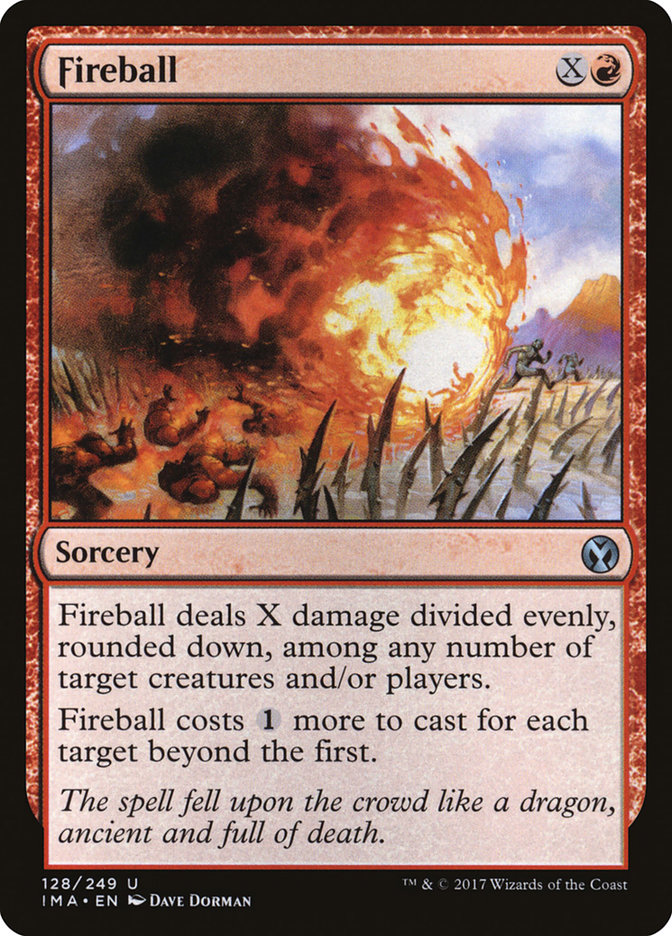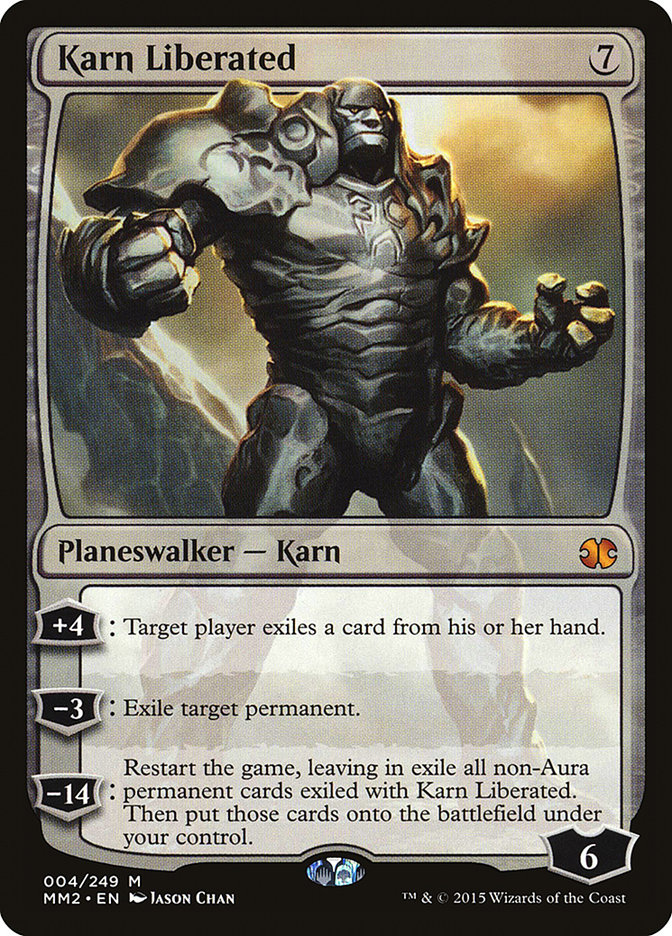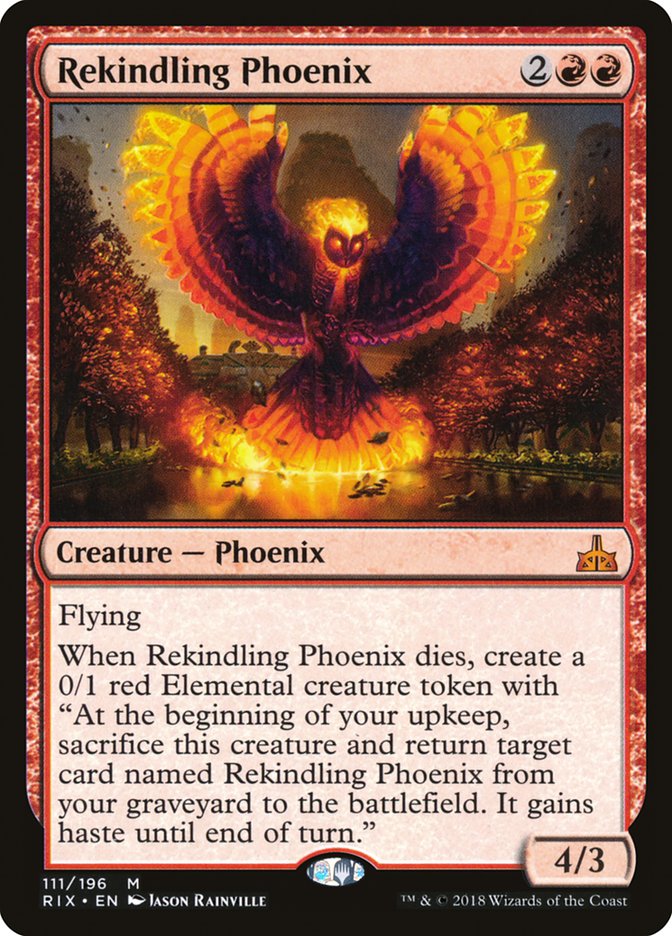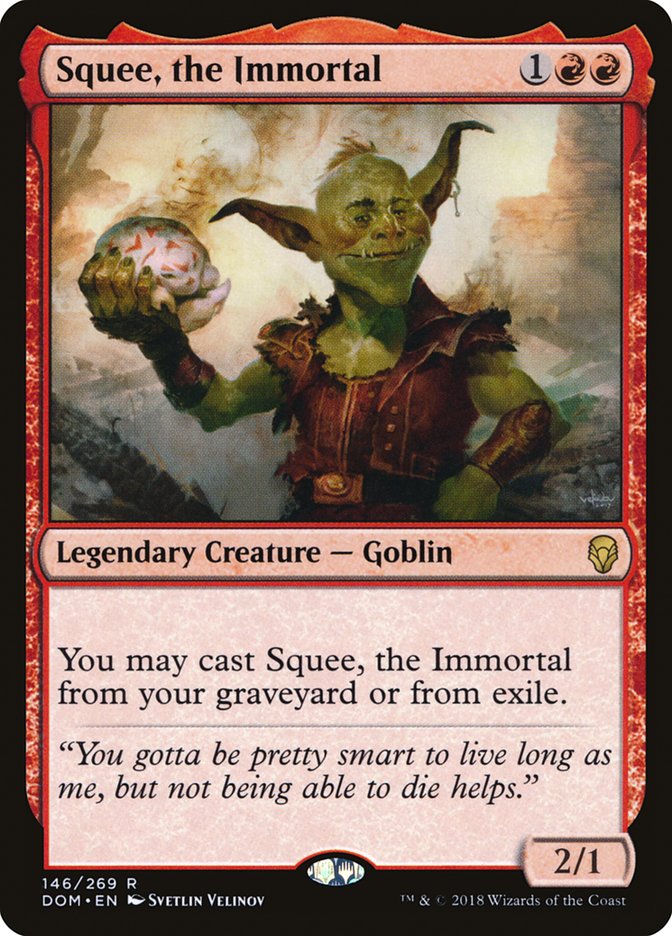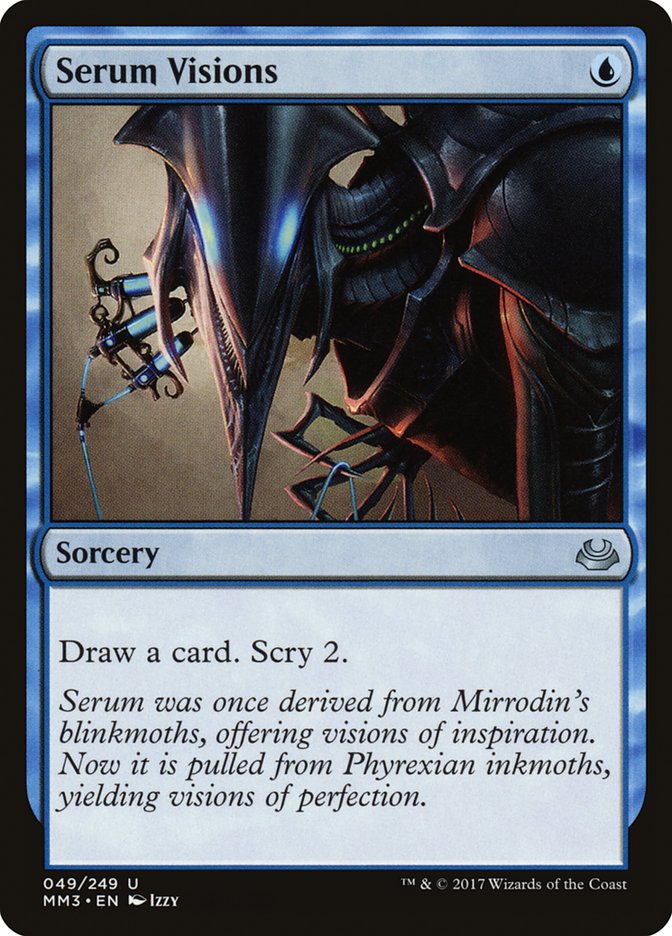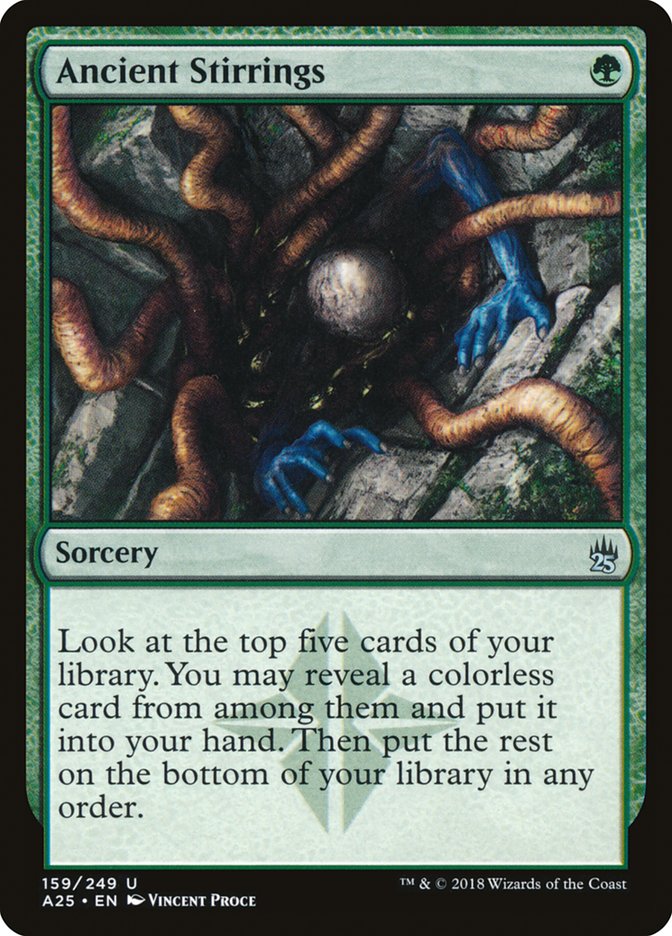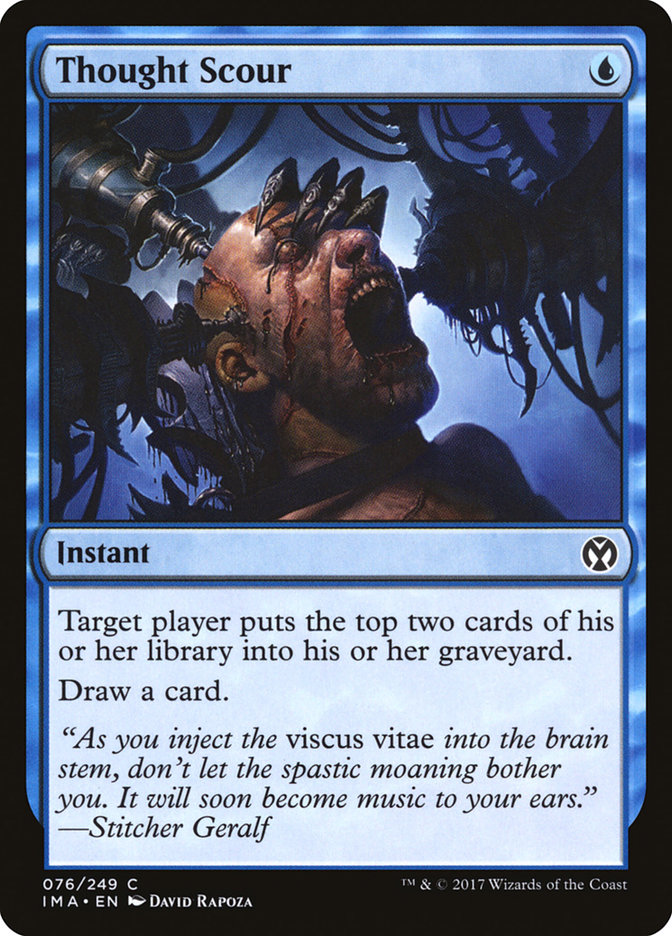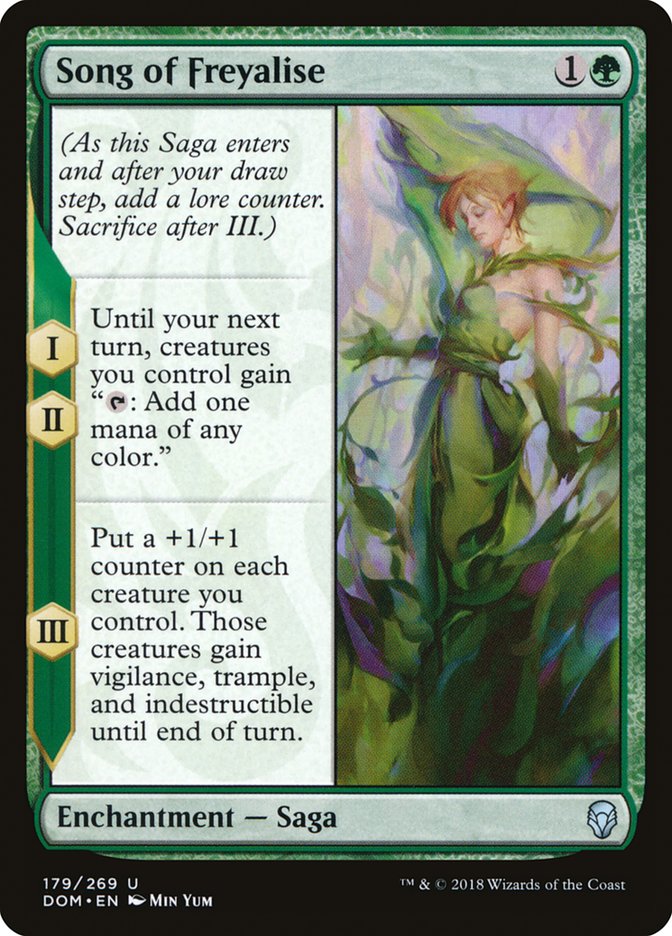File this one under “note to self:”
I’ve been guilty of making a lot of decks that are just trying too hard,
getting too fancy, or are preoccupied with all the wrong things, and this
is my effort to learn how to notice when I’m doing that and focus on
building decks that do things that matter.
I love any time I can make cards do more than they look like they can on
face value, but not every beneficial interaction can actually lead to a
good deck. The central thing you need to focus on is what your deck’s
output is. Take Tron, for example.
When the Urza lands were first printed in Antiquities, this is
what seven colorless mana got you:


Really, your best bet was:
Of course, none of this mattered, because the tools didn’t exist to
reliably assemble Tron anyway, and even if they did, Strip Mine was a legal
card that you could play four copies of.
More to the point, when the Urza lands were reprinted later on, for a
while, the best thing people could find to do with them was Mindslaver.
Tron as we know it required the printing of Karn Liberated, because with
Karn, seven colorless mana took on an entirely new meaning. Before Karn,
you could do better than you could back in Antiquities, but for
the most part, you were still basically just getting some big dumb artifact
creature.
To my mind, Tron transformed again with the printing of Ulamog, the
Ceaseless Hunger, which revolutionized the output of the Tron engine by
giving it an affordable and massively high impact cast trigger. Without
these outputs, the fantastic infrastructure for assembling Tron wouldn’t
amount to anything.
Consider Ironworks. In general, you can’t afford to play a bunch of
Chromatic Stars and Ichor Wellsprings; while they don’t cost much to cycle,
when you’re just cycling into more of them, the cost to actually find
something real escalates quickly. If our plan was to fill our deck with
that stuff and win with Disciple of the Vault and Slag Fiend, we’d be
spending too much mana for too little payoff. The deck only functions at
all because Krark-Clan Ironworks itself turns all that air into
Manamorphose with Baral, Chief of Compliance, and then outputs infinite
damage. A conversation with someone new to the archetype should go like
this:
“That looks like a lot of cards that don’t do anything, what does this deck
do?”
“Consistently kills the opponent on turn 3 or 4.”
“Oh, that’s pretty good.”
I’ve personally spent an embarrassing amount of time trying to make
something out of the “engine” of Surge Node, Everflowing Chalice, Voltaic
Key, Mox Opal, and ideally some ways to proliferate. It started by noticing
that turn 1 land, Surge Node, Everflowing Chalice for zero, Mox Opal, tap
mox Opal to activate Surge Node putting a counter on Everflowing Chalice
was an opening that could lead to extremely explosive starts. The problem
is that it also takes up a ton of space in your deck with cards that don’t
do anything on their own. Pretty soon I started playing Astral Cornucopia
and Energy Chamber as backup combo pieces, and figuring out what to do with
that mana was kind of an afterthought.
This applies to more conventional cards as well. Consider Resplendent Angel
and the dreams of building an Angel tribal deck with Shalai, Voice of
Plenty and Lyra Dawnbringer.
What does this deck do? What kind of clock is it establishing/when does it
kill the opponent? How can the opponent interact with it, and how does it
interact with the opponent?
You’re playing a lot of lands because you’re trying to cast expensive
threats, but none of them provide immediate card advantage, so if your
opponent can trade cards with them, you’re going to flood out, and if your
opponent has a battlefield presence while trading, you’re also going to be
falling further behind on life totals. Your creatures all more expensive
than most answers, so you’re also falling progressively behind on mana if
your opponent can play two spells on these turns.
The dream isn’t even that if one of your big threats go unanswered, you
win; the idea is that if you stick multiple of these, you win very big.
Just play a Rekindling Phoenix. It gets the job done.
I personally really enjoy working very hard to accomplish very little in
Magic. The more actions I can take, the more fun I’m having, and I get to
take a lot of actions if my actions are each not accomplishing very much.
This is why I love Lantern. I don’t know if there’s ever been another deck
in history where you take that many trivially low impact actions. “Yes, I’d
like to spend fifteen turns rearranging the top cards of our libraries,
please.” Lantern, for all its near-useless effort, has a great output and
good interaction.
“What does this deck do?”
“Stops my opponent from ever making a meaningful play after turn 3.”
Limited Magic is often an entirely different story, where interactions like
Ravenous Harpy with Reassembling Skeletons can shine. As someone who likes
to try to draw some inspiration from Limited, I’m occasionally drawn to
cards like Reassembling Skeletons in Constructed. Squee, the Immortal is
close enough to being a realistic sideboard card in Red decks in Standard
that I’ve seen people try it, and the idea’s tempting, but at the end of
the day, you really have to acknowledge that the output just isn’t there.
Yes, the red mirror can get grindy after sideboarding, but it’s still
usually about the last Glorybringer standing, and Squee’s not going to have
anything to say about that, and most of the time you’ll just find yourself
down three mana and facing down a Goblin Chainwhirler.
Maybe it’s a good way to pressure control decks? Well, it’s definitely not
going to matter against The Scarab God. It can attack Teferi, kind of, I
suppose, although even in the dream scenario in the dream matchup, Teferi
offers the one kind of removal that actually works against Squee.
Magic is fantastic at teaching the lesson that what matters isn’t how hard
you work, it’s what you actually produce. We know Serum Visions is a “good
card” and I’ve called Ancient Stirrings one of the most powerful cards in
Modern, but at the end of the day, these cards are just the cost of doing
business; they don’t actually produce results themselves. You can only play
Ancient Stirrings if you play a deck that’s built right for it, but getting
to play Ancient Stirrings shouldn’t be the goal. Ancient Stirrings lets you
trade mana for consistency, which is great if there’s a single card your
deck needs, but there’s a reason traditional Affinity doesn’t play Ancient
Stirrings: consistency costs efficiency. The mana you’re spending slows
your deck down.
Thought Scour is a strong card, but it’s a cost of doing business if you
want cards like Gurmag Angler and Snapcaster Mage; it doesn’t do anything,
itself. Obviously, a lot of successful decks play these kinds of cards, but
when evaluating what a deck does, these enablers fill a similar role to
lands; they just let you cast the spells your deck is trying to cast.
Some decks are too cute because their heart is just in the wrong place, as
I’ve described above. They’re trying to do something because it’s cool,
like making a bunch of mana with no clear end in sight or making a bunch of
Angels when there are faster and easier ways to kill your opponent. Other
decks are too cute because, while they’re trying to do something
worthwhile, they’re lacking in consistency or resilience. Take the newest
Modern craze, R/B Vengevine.
Creatures (33)
- 1 Greater Gargadon
- 2 Bloodghast
- 4 Goblin Bushwhacker
- 4 Vengevine
- 3 Viscera Seer
- 4 Gravecrawler
- 3 Hangarback Walker
- 4 Insolent Neonate
- 4 Walking Ballista
- 4 Stitcher's Supplier
Lands (17)
Spells (10)

I tried the deck and basically couldn’t get it to do anything. Now, it’s
basically guaranteed that I largely didn’t know what to look for in an
opening hand and probably wasn’t playing it right, but I’m pretty sure that
deck just needs too much to go right. Yeah, your nut draws are great, but
when you don’t draw Vengevine or Ensnaring Bridge or when you
don’t draw Faithless Looting or Insolent Neonate, you’re hoping to get at
least a little lucky, and it’s not like every time you draw both halves of
“discard a high impact graveyard card” you get to do something all that
impressive. I’m not confident, but my first impression is that that deck
just isn’t consistent enough.
Oh, and as it happens, it also functions as an example of a deck not being
resilient enough, since it’s very bad against any kind of graveyard hate,
but sideboard hate isn’t even really what I had in mind. Really, for me,
this is another spot for the reminder that what works in Limited doesn’t
always work in Constructed. In fact, it almost never does.
After drafting a bit with Dominaria, I was beyond impressed by
Song of Freyalise, and felt like it had to have potential in Constructed,
particularly given that Cryptolith Rite was good and Song of Freyalise
largely seemed better. The problem, of course, is that Song of Freyalise is
a critical mass card. It relies on other cards to do anything, and in
Constructed, it’s far less likely that you’ll end up with multiple non-land
permanents on the battlefield.
The real lesson here might have been just how much Cryptolith Rite was
leaning on Duskwatch Recruiter as a way to beat attrition strategies while
ensuring that it had creatures to work with and something productive to
spend mana on. The takeaway from that interaction shouldn’t have been that
Cryptolith Rite, the mana engine, was the powerful card, Duskwatch
Recruiter, the output, was what held those decks together; being able to
tap creatures for mana isn’t inherently strong because mana isn’t
inherently an output. If all you’re doing is emptying your hand,
congratulations, you built a situational Dark Ritual that made you skip
some attacks and now you’re maximally exposed to a sweeper.
Magic is absolutely a game of interactions, and a lot of the best decks,
especially in Modern, do rely on synergies to get more out of their cards,
so it can absolutely be worth jumping through some hoops to accomplish your
goals, but at the end of the day, you need to ask what the actual threat
you’re outputting is. Is your clock faster than another deck? Is it more
consistent? More resilient? More disruptive? Always focus on the output.
That’s the bottom line. Think about Dredge, a deck of enablers and payoffs.
More cards like Faithless Looting and Golgari Grave-Troll make the deck
most consistent, but they don’t tell you what the deck actually does. More
cards like Bridge from Below and Dread Return make the deck more powerful,
those are the actual outputs. A deck like that needs both; you can’t just
mill yourself and eventually put a few 1/1 fliers and 2/1 can’t block
creatures onto the battlefield, and you can’t just say, “40% of the time I
make eight power by turn 2, 60% of the time I make three power by turn 2.”
(I’m looking at you, R/B Vengevine, unless, you know, I’m wrong and you’re
actually consistent if played correctly.)
Another good example is Mono-Blue Paradoxical Outcome in Standard. Some of
your “good hands” start with Prophetic Prism into Inspiring Statuary into
Paradoxical Outcome, and from there you hope to draw something to do. If
you have some Ornithopters, that draw can actually produce a large
battlefield presence with a lot of extra cards in hand on turn 4, but if
you don’t spike a Karn, Scion of Urza or Sai, Master Thopterist off the
Paradoxical Outcome, your draw really doesn’t do anything. Drawing a few
cards is nice, but this isn’t Vintage, and resolving a single Paradoxical
Outcome doesn’t automatically win the game. That was too much mana to set
up and you’re probably dead. Good plays can be losing plays if they only
generate theoretical value in your hand and don’t meaningfully impact the
game on the battlefield.
The takeaway, when you build or examine a new deck, remember to always ask
what narrative the deck is building. And remember that the narrative always
ends with killing your opponent. You’re looking for a short story, and if
you get a novel, make sure there aren’t any plotholes.


